
Besides bringing a magical beauty to any garden, butterflies help promote growth by pollinating flowers. You can attract butterflies to your yard with these simple DIY butterfly feeders that also serve as attractive garden ornaments.
Mother Nature would definitely approve of these butterfly feeder DIYs. See a video for step-by-step instructions and read this guide to learn how to make two feeder variations that will attract butterflies.
Video of the Day
Video: Homemade Butterfly Feeder
How to Make a DIY Butterfly Feeder With a Plate
Things You'll Need
Acrylic plate
Sugar
Water
Sponge
Wire
1. Attach plate holder to plate
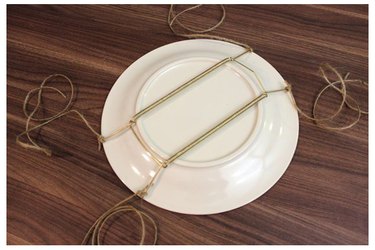
Attach a wire plate holder to the back of an acrylic plate. You can find plate holders at hardware stores, arts and crafts stores, and home decor stores. Cut four pieces of string about 24 inches long, and tie the ends to the prongs gripping the edge of the plate. These four strings will suspend the DIY butterfly feeder on the tree.
2. Add glass beads to strings

At random points along the four strings, thread some glass beads and secure them with knots on either side. These beads will help catch the light to attract butterflies to the DIY feeder.
Tip
Bright colors attract butterflies, so consider beads that are vibrant shades of red, orange, yellow, blue, and purple.
3. Tie strings to washer

Take the four strings and tie them together around a 1/2-inch metal washer. This washer will be used later for hanging the feeder on a tree.
4. Add flowers to strings
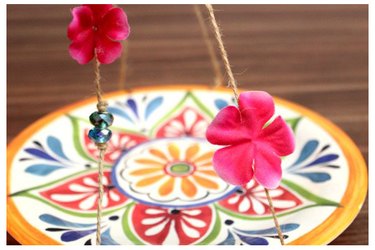
Using a hot glue gun, attach brightly colored silk flowers to the strings at various points to help attract butterflies.
5. Make butterfly food
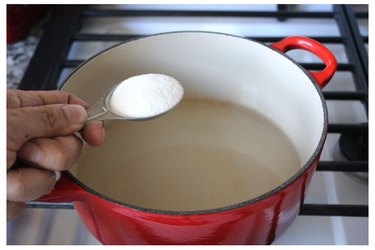
Make your own butterfly food by mixing 10 parts water with one part sugar. Heat the mixture until the sugar dissolves, and allow it to cool.
Warning
Be careful not to add too much sugar to the butterfly food mixture. A higher concentration of sugar can dehydrate the butterflies.
6. Hang the feeder

In the center of the plate, place a sponge on some silk leaves. Spoon some of the sugar-water mixture onto the sponge until it is saturated but not overflowing. The soaked sponge allows for a continuous flow of the sugary solution, making it easy for butterflies to suck down their fill.
Hang the DIY butterfly feeder from a tree branch using wire connected to the washer. Check the feeder regularly to make sure there is plenty of sugar water in the sponge.
Tip
If you have problems with ants, apply some petroleum jelly to the rim of the plate or jar to create a barrier they will avoid. If you have trouble with wasps, add slices of cucumber to the plate or on top of the jar. Cucumbers are a natural wasp repellant and can also work to repel ants.
How to Make a DIY Butterfly Feeder With a Jar
Things You'll Need
Glass jar
Hammer
Nail
Sugar
Water
Wire
1. Nail a hole in jar lid
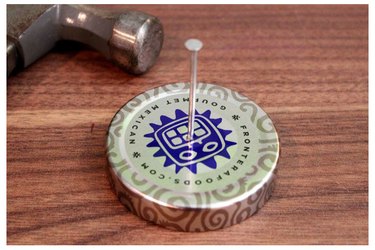
Thoroughly wash and dry a glass jar and lid, removing the paper label. Using a hammer and nail, puncture a hole in the center of the lid.
Tip
To save money and reduce waste, use an empty pickle or pasta sauce jar once you're finished with it. Clean it thoroughly before reusing it and remove any labels.
2. Cut sponge pieces

Cut a 1/4-inch strip from one end of a 1/2-inch-thick sponge, and cut that piece in half lengthwise so it is about 1/4 inch on all sides. Then trim this piece so the sponge is about 1 inch long.
3. Add sponge to lid
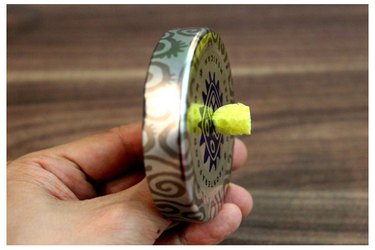
Insert the 1-inch piece of sponge into the hole in the lid so there is a 1/2 inch of sponge on either side. To help squeeze the sponge in the hole, use the nail to push a little bit of the sponge through, and then pull it from the other side. The sponge should be very snug in the hole.
4. Tie strings to jar
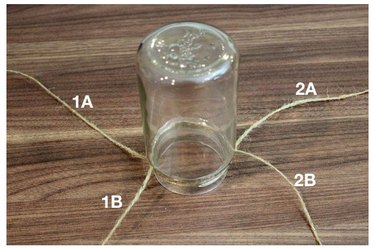
Turn the glass jar upside down. Cut two pieces of string that are 48 inches long. Wrap each string around the base of the jar and tie a double knot. The two knots should be opposite each across. You will now have four ends of string extending from the jar. In the photo above, they are labeled 1A, 1B, 2A and 2B.
5. Tie 1B and 2B strings

Take strings 1B and 2B and tie a double knot about halfway up the inverted jar. Do the same with strings 1A and 2A. Try to get the two knots at an even height, on opposite sides of the jar.
6. Tie the remaining strings
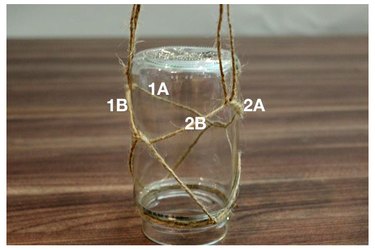
Take strings 2A and 2B and tie a double knot at the top of the inverted jar. Do the same with strings 1A and 1B. You have now formed a macrame-style structure to hold the jar securely.
7. Add glass beads and washer
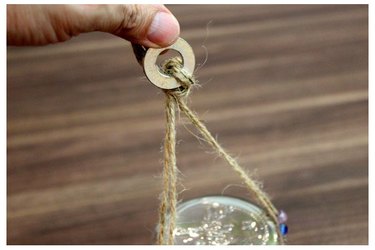
Thread some glass beads on the string to catch light in the garden and attract butterflies to the DIY feeder. Tie the four strings together to a half-inch metal washer to finish the job. You will use this washer to hang the feeder to a tree branch.
8. Complete and hang the feeder
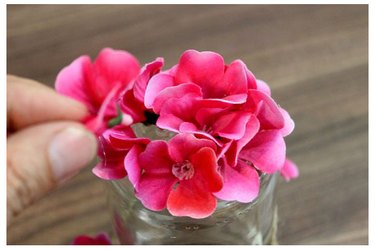
Hot glue some silk flowers to the top of the inverted jar to help attract butterflies. Glue additional flowers at other points on the jar or along the strings.
Fill the jar with sugar water butterfly food (see instructions on how to make butterfly food above), and seal the lid tightly. When you invert the jar, the sugar water will saturate the end of the sponge sticking through the lid. Hang the feeder on a tree branch, using wire threaded through the washer.